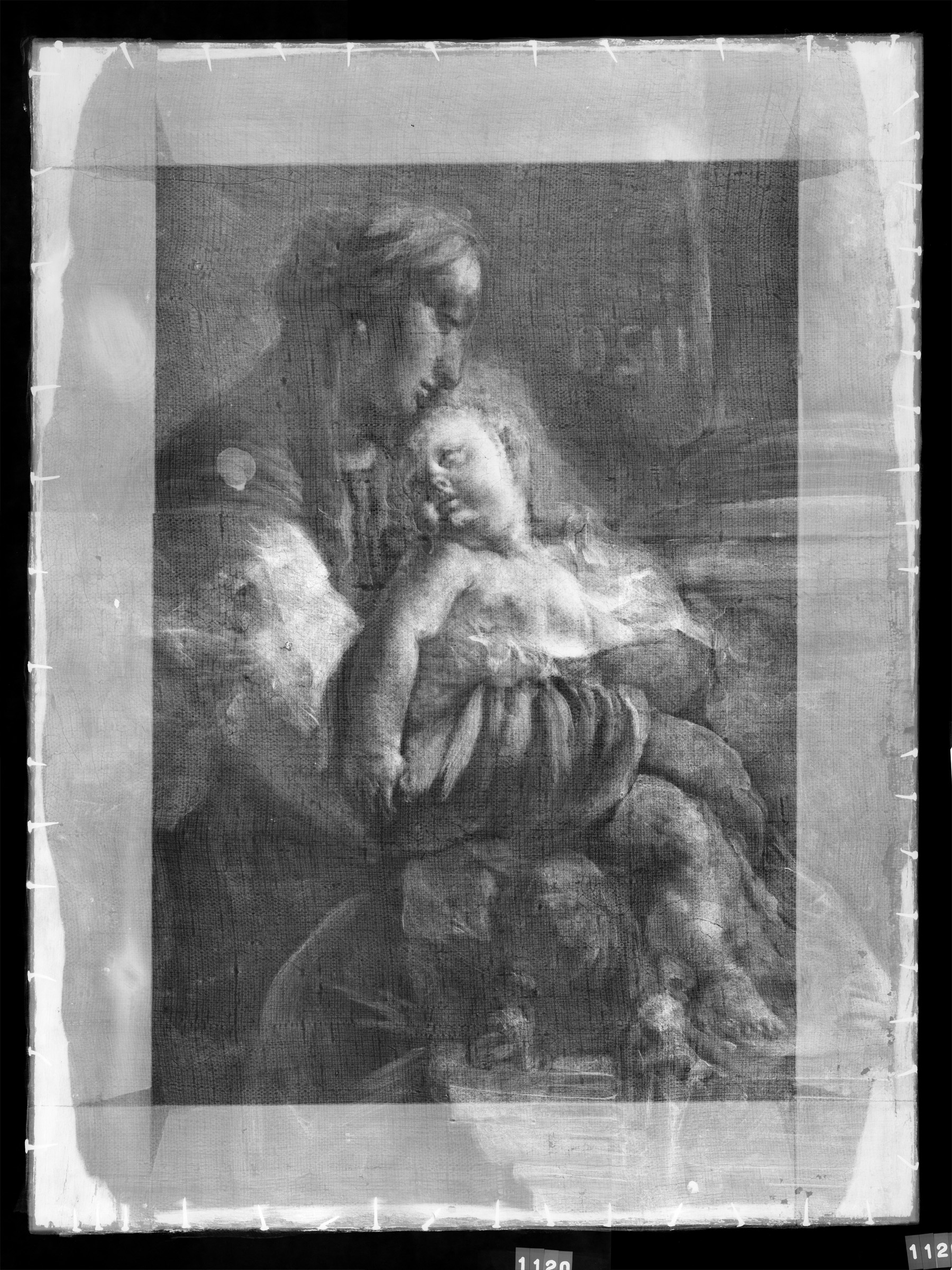Virgin and Child
(Baroque Europe )
The use of forceful chiaroscuro (modeling in light and shade) is characteristic of Tiepolo's images of the Madonna and Child that were intended for private devotion. There is an element of melancholy in the way in which the Virgin embraces her son. This suggests that they both perceive his future fate, and the motif alludes to the traditional image of the Pietà, in which the Virgin mourns over the body of her dead son. She is often shown near or against a column, which here is meant to convey her nobility and strength.
These small images for private use are primarily from early in Tiepolo's career, before he was in great demand for large-scale commissions.
Provenance
Provenance (from the French provenir, 'to come from/forth') is the chronology of the ownership, custody, or location of a historical object. Learn more about provenance at the Walters.
Don Marcello Massarenti Collection, Rome [date and mode of acquisition unknown] [1897 catalogue: no. 460, as Luca Giordiano]; Henry Walters, Baltimore, 1902, by purchase; Walters Art Museum, 1931, by bequest.
Exhibitions
| 1996 | Tiepolo Unveiled: The Restoration of a Masterpiece. The Walters Art Gallery, Baltimore. |
| 1978 | Tiepolos in America. Birmingham Museum of Art, Birmingham; Springfield Museums, Springfield. |
| 1950 | The Christmas Story in the Language of Art. The Washington County Museum, Hagerstown. |
Conservation
| Date | Description | Narrative |
|---|---|---|
| 8/1/1977 | Treatment | cleaned |
| 5/12/1978 | Examination | examined for condition |
Geographies
Italy, Venice (Place of Origin)
Measurements
Painted surface H: 25 5/16 x W: 19 in. (64.3 x 48.3 cm)
Credit Line
Acquired by Henry Walters with the Massarenti Collection, 1902
Location in Museum
Accession Number
In libraries, galleries, museums, and archives, an accession number is a unique identifier assigned to each object in the collection.
In libraries, galleries, museums, and archives, an accession number is a unique identifier assigned to each object in the collection.
37.1120




